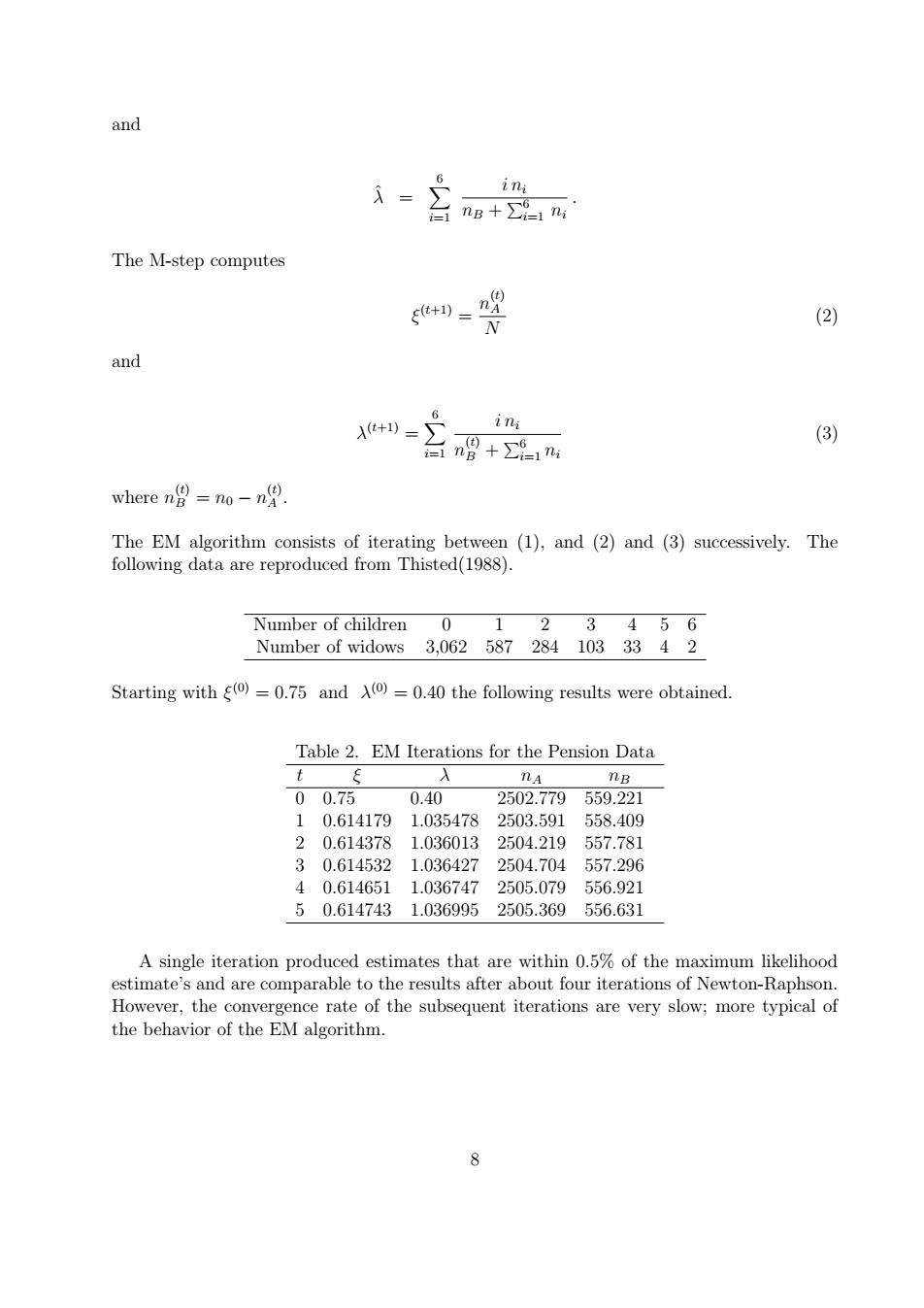正在加载图片...

and 入= ini 台ns+∑91n The M-step computes N (2) and 6 X+1)= ini (3) 台ng+∑-1ni .(t) where ng no -nd. The EM algorithm consists of iterating between (1),and(2)and (3)successively.The following data are reproduced from Thisted(1988). Number of children 0 1 2 3 4 5 6 Number of widows 3,062 587 284 103 33 4 2 Starting with (o)=0.75 and A(0)=0.40 the following results were obtained. Table 2.EM Iterations for the Pension Data tξ 入 TA nB 00.75 0.40 2502.779559.221 1 0.614179 1.035478 2503.591 558.409 20.614378 1.036013 2504.219 557.781 30.614532 1.036427 2504.704 557.296 40.614651 1.036747 2505.079 556.921 50.614743 1.036995 2505.369556.631 A single iteration produced estimates that are within 0.5%of the maximum likelihood estimate's and are comparable to the results after about four iterations of Newton-Raphson. However,the convergence rate of the subsequent iterations are very slow;more typical of the behavior of the EM algorithm. 8and λˆ = X 6 i=1 i ni nB + P6 i=1 ni . The M-step computes ξ (t+1) = n (t) A N (2) and λ (t+1) = X 6 i=1 i ni n (t) B + P6 i=1 ni (3) where n (t) B = n0 − n (t) A . The EM algorithm consists of iterating between (1), and (2) and (3) successively. The following data are reproduced from Thisted(1988). Number of children 0 1 2 3 4 5 6 Number of widows 3,062 587 284 103 33 4 2 Starting with ξ (0) = 0.75 and λ (0) = 0.40 the following results were obtained. Table 2. EM Iterations for the Pension Data t ξ λ nA nB 0 0.75 0.40 2502.779 559.221 1 0.614179 1.035478 2503.591 558.409 2 0.614378 1.036013 2504.219 557.781 3 0.614532 1.036427 2504.704 557.296 4 0.614651 1.036747 2505.079 556.921 5 0.614743 1.036995 2505.369 556.631 A single iteration produced estimates that are within 0.5% of the maximum likelihood estimate’s and are comparable to the results after about four iterations of Newton-Raphson. However, the convergence rate of the subsequent iterations are very slow; more typical of the behavior of the EM algorithm. 8